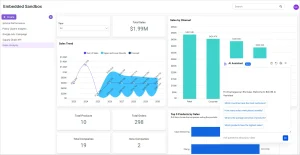Sustainable and Eco-Friendly Sales Practices: The New Way to Win Customers and Do Good

Let’s be honest. For a long time, the world of sales felt a bit… separate from the world of, well, the world. It was all about moving product, hitting quotas, and closing deals. The environmental impact? Often an afterthought, if it was a thought at all.
But that’s changing. Fast. Today’s customers—especially younger generations—aren’t just buying a product. They’re buying your values. They’re investing in your company’s story. And a huge part of that story is how you treat the planet.
Sustainable sales isn’t some fluffy, feel-good side project anymore. It’s a powerful, strategic advantage. It’s about weaving environmental and social responsibility into the very fabric of your sales process, from the first touchpoint to the final handoff. And honestly? It’s just good business.
What Does “Sustainable Sales” Actually Mean?
It’s more than just selling a green product. Think of it as the how rather than just the what. It’s the operational backbone of your sales efforts. It’s the conscious choice to minimize waste, reduce your carbon footprint, and build relationships based on transparency and longevity, not just a one-time transaction.
This shift is driven by a real, palpable consumer demand. People are tired of greenwashing. They crave authenticity. They want to support businesses that are trying, even imperfectly, to be part of the solution.
Practical Shifts for a Greener Sales Process
Okay, so how do you actually do this? It’s not about flipping a switch. It’s a series of intentional, sometimes small, changes that add up to a massive difference. Let’s break it down.
1. Rethink Your Sales Materials
Remember the days of glossy, full-color brochures stuffed in a heavy folder? That model is, well, wasteful. The modern approach is digital-first.
Create beautiful, easily shareable PDFs, interactive web pages, and short, punchy video explainers. When you must print, use recycled paper and soy-based inks. It’s a simple signal that says, “We’re thinking about this.”
2. Green Your Logistics and Operations
This is where the rubber meets the road. The carbon footprint of your sales team—all those flights, hotel stays, and car miles—is a huge part of your environmental impact.
Here’s the deal: prioritize virtual meetings. They’ve become the norm, and they’re incredibly effective. For necessary travel, opt for trains over planes when feasible. And for company vehicles, well, the transition to electric isn’t just coming; it’s already here. Make it a priority.
3. Sell Solutions, Not Just Stuff
This is a fundamental mindset shift. Instead of pushing a product, focus on the outcome it provides. Could you offer a product-as-a-service model? Where you maintain ownership and the customer pays for the usage?
This encourages you to build durable, repairable products and creates a circular economy. You’re incentivized to make things last, not break. It aligns your success with the planet’s health. It’s a win-win.
The Human Element: Building Trust Through Transparency
Sustainability isn’t just an external policy. It has to be internal, too. It’s about how you treat your team and your customers.
Train your sales team on your sustainability goals. Empower them to talk about your eco-friendly initiatives authentically. They shouldn’t just be reading from a script; they should be genuine ambassadors. When a prospect asks a tough question about your supply chain, your team should be able to answer honestly—even if the answer is, “That’s an area we’re actively working to improve.”
Honesty builds more trust than a perfect, and often unbelievable, story.
Leveraging Eco-Consciousness in Your Messaging
You don’t have to be shy about this. Your commitment is a differentiator. Weave it into your value proposition.
Instead of just listing features, talk about the lifetime cost, the energy savings, or the reduced waste. Use concrete numbers. For instance:
| Traditional Sales Pitch | Sustainable Sales Angle |
| “This machine is 15% more efficient.” | “This machine will reduce your energy consumption by 15%, cutting your carbon footprint and saving you $X annually on utilities.” |
| “We offer a standard one-year warranty.” | “We design our products for longevity, backed by a 5-year warranty and a robust repair program to keep them out of landfills.” |
See the difference? You’re connecting the product’s benefit to a larger, more meaningful story.
The Tangible Benefits You Can’t Ignore
Beyond feeling good, this approach delivers real, hard-nosed business advantages.
First, cost savings. Less printing, less travel, more efficient logistics… these all directly improve your bottom line.
Second, and maybe more importantly, customer loyalty and brand reputation. When you demonstrate a real commitment to values, you attract customers who share those values. They become advocates. They stick with you through thick and thin. In a crowded market, that loyalty is pure gold.
And finally, future-proofing your business. Regulations are getting stricter. Consumer expectations are rising. Building a sustainable sales model now isn’t just trendy; it’s essential for long-term survival.
A Final Thought: It’s a Journey, Not a Destination
No company is perfectly sustainable. The goal isn’t perfection—it’s progress. It’s about making better choices, one step at a time. Maybe you start by switching to digital contracts. Then you audit your shipping materials. Then you implement a take-back program for your products.
Each step, no matter how small, is a move in the right direction. It signals to your team, your customers, and the world that you’re part of a new way of doing business. A way that values people, profit, and the planet—all at the same time. And that, you know, is a story worth selling.







